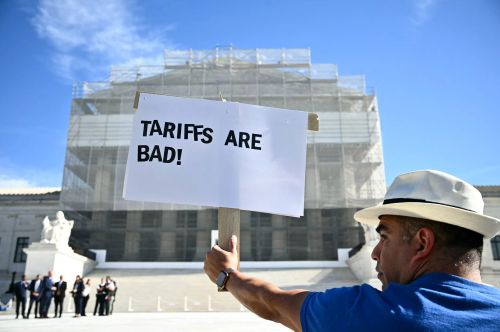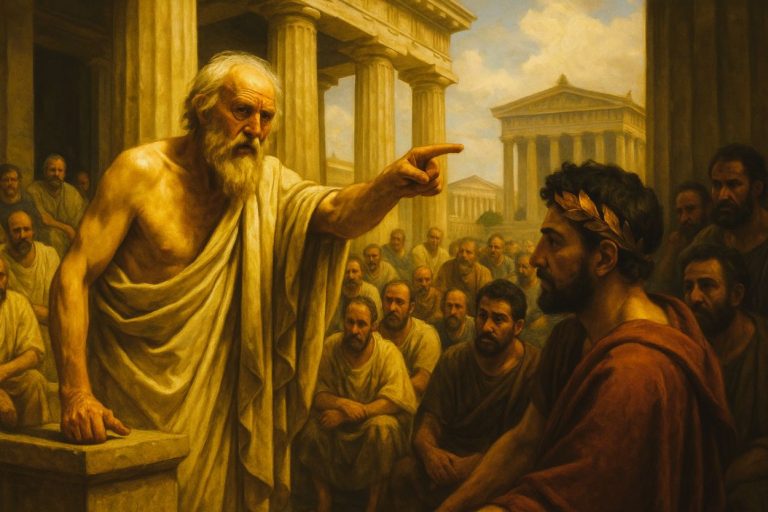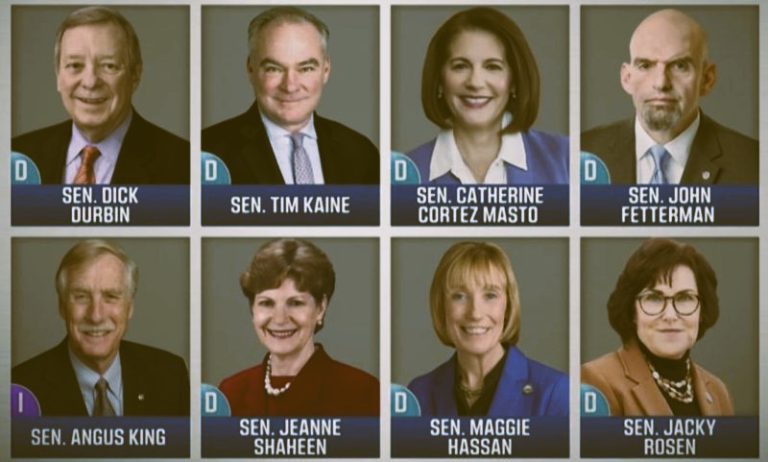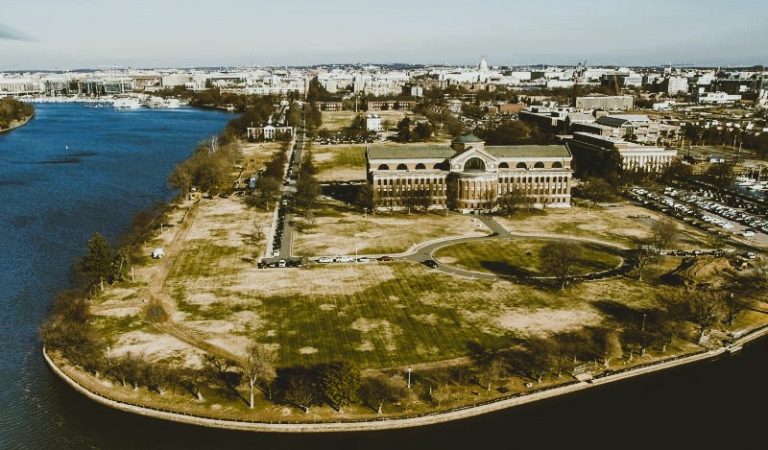

Trump’s $2,000 tariff “dividend” is not an act of economic populism; it’s a mirage of prosperity built on confusion and misdirection.

By Matthew A. McIntosh
Public Historian
Brewminate
Introduction
Donald Trump has promised every American a $2,000 “dividend check” funded by revenue from tariffs, a sweeping declaration that sounds generous, patriotic, and populist. But as with many of his economic boasts, the math collapses under scrutiny. The president claims the payments will come from “money we’ve made from tariffs,” describing them as “a return to the American people.” He also dismissed critics of the idea as “fools.” Yet tariffs are not paid by foreign governments, as he continues to insist. They are paid by American importers, the same companies and consumers now struggling with higher prices on everything from food to electronics.
Economists from across the spectrum agree: there is no surplus windfall waiting to be distributed. The federal government has not “made” money from tariffs in any sustainable sense; it has simply shifted the cost burden onto U.S. businesses and households. Trump’s proposal would require at least $600 billion in available funds, more than double what tariffs currently bring in annually. The plan is a fiscal mirage, a campaign soundbite designed to disguise the economic wreckage those same tariffs have created.
Trump’s promise of tariff-funded rebates is less an economic policy than a political spectacle, a headline crafted to redirect attention from the inflation, supply chain instability, and stagnating growth his trade policies have helped fuel. Behind the populist veneer lies the same old pattern: a billionaire’s government pledging to uplift “the people” while protecting the interests of those already at the top.
What the Proposal Actually Entails
Trump’s latest pitch isn’t policy; it’s performance. Standing before supporters, he announced that every American would receive a “dividend check” of at least $2,000, supposedly paid out of the profits from tariffs. “We’re returning your money to you,” he declared, while mocking critics as “fools” for questioning the plan. Trump described the proposal as a populist victory, proof, he claimed, that tariffs had made America rich again.
But behind the showmanship lies a gaping hole in basic arithmetic. Distributing $2,000 per person would cost roughly $600 billion, far exceeding what the U.S. Treasury has collected through tariffs this year. Total tariff revenue in 2025 is estimated at just between $150 and $300 billion, not enough to fund even half of Trump’s promised payout. His Treasury Department has not produced a concrete mechanism for how these payments would be made, and officials privately acknowledge the proposal is still “under consideration.”
Even Trump’s own aides are struggling to reconcile rhetoric with reality. Senior economic advisers have floated alternate versions, from targeted rebates to future tax credits, but none have been formally outlined or budgeted. One official admitted that the details would “take time to work through,” a familiar refrain in Trump-era policymaking: the bold announcement first, the impossible math later.
At its core, the proposal misleads on a fundamental truth about tariffs. Foreign countries don’t pay them; American importers do. When Trump boasts that the United States is collecting billions from China, what he means is that U.S. companies are paying billions in import duties to the federal government, which are then passed along to consumers through higher prices. Economists have called it one of the most regressive forms of taxation, disproportionately hitting middle- and lower-income families. As a result, Trump’s supposed “dividend” is essentially a refund for money Americans already paid, minus the inflation that his trade war has helped fuel.
What Trump is selling is not a rebate, but a story, one that fits neatly into his broader narrative of nationalist economics and personal triumph. The idea that he alone is “returning” wealth to the people transforms a self-inflicted economic wound into a political gift. The problem is that the math, the markets, and the millions struggling under higher prices all tell a different story.
The Real Economic Risks
The danger of Trump’s tariff rebate proposal isn’t only that it’s unfunded; it’s that it weaponizes economic ignorance. Tariffs have always functioned as a hidden tax, one that Americans pay every time they buy imported goods. The president continues to repeat the fiction that “China pays,” but tariffs are collected by the U.S. government from American companies, not foreign treasuries. Every dollar “earned” through tariffs has already come out of American pockets.
The White House insists the rebate would offset those costs, but economists warn the plan would do the opposite. Injecting hundreds of billions in stimulus payments without offsetting revenue would fuel inflation at a time when prices are already volatile. $600 billion in new spending would nearly erase any deficit gains achieved this year, putting more pressure on the Federal Reserve to raise interest rates again. And if the checks were to materialize, their impact would be short-lived: a temporary sugar rush for consumers followed by higher costs on nearly every imported product.
Meanwhile, the tariffs themselves are quietly draining the very sectors Trump claims to defend. Manufacturing firms dependent on global supply chains are facing steep import costs on raw materials and components, forcing layoffs and production cuts. Small retailers, already squeezed by rising wholesale prices, are seeing profit margins vanish. The administration touts tariff revenues as proof of strength, but they are, in reality, a symptom of economic strain, Americans paying more to buy the same goods they did before.
The notion of “returning” that money through checks is a political sleight of hand. It allows Trump to reframe an inflationary policy as a populist giveaway, masking the fact that tariffs function as an indirect tax on consumers. It’s the economic equivalent of pickpocketing the public, then handing back a fraction of what was taken and calling it generosity.
The more serious risk is psychological. The promise of $2,000 checks feeds a dangerous illusion that protectionism can be profitable, that America can grow richer by taxing itself. This isn’t just bad economics; it’s bad governance. When leaders blur the line between fiscal fantasy and political theater, public trust becomes collateral damage.
Motivations and Messaging
The $2,000 tariff dividend isn’t a policy designed to help Americans; it’s a political device meant to distract them. Trump’s messaging plays to a familiar script: crisis, blame, rescue. He sparks anxiety with tariffs that inflate prices, pins that pain on foreign adversaries, and then promises salvation through a rebate he’ll never deliver. It’s a cycle of chaos and credit, calibrated for the campaign trail. Trump framed the announcement as proof that his trade policies were “winning” against global rivals, calling critics “fools” for questioning his strategy. The insult isn’t accidental; it’s bait for populist loyalty, casting disbelief itself as betrayal.
Behind that bluster is an increasingly desperate narrative. Trump’s economic record in his second term is deteriorating under the weight of his own policies. Consumer spending is softening, inflation remains stubborn, and trade deficits are widening despite years of tariffs. Rather than acknowledge the consequences, Trump has chosen to repackage the fallout as generosity. By portraying himself as the benevolent distributor of tariff wealth, he obscures the simple truth that Americans are paying for their own handouts. The White House has offered no legislative language, no distribution plan, and no budget offsets, just a promise and a punchline.
This approach fits neatly into Trump’s long pattern of transactional politics. He governs not through policy coherence but through spectacle, grand gestures meant to dominate headlines and drown out scrutiny. Every press conference and post becomes an episode in a serialized narrative of grievance and triumph. The $2,000 check isn’t meant to withstand economic analysis; it’s meant to produce an emotional reaction, gratitude among his supporters and outrage among his critics. In Trump’s political ecosystem, both responses serve the same purpose: attention.
The true beneficiaries of this performance are not working Americans but the financial elites and corporate allies who continue to profit from instability. Tariffs have padded domestic monopolies, driven out smaller competitors, and redirected contracts toward politically loyal firms. For Trump, chaos isn’t collateral damage; it’s the strategy. The $2,000 promise is simply its latest prop, a mirage of generosity concealing an economy tilted toward those already at the top.
Conclusion
Trump’s $2,000 tariff “dividend” is not an act of economic populism; it’s a mirage of prosperity built on confusion and misdirection. The promise of free money from tariffs is seductive precisely because it sounds simple: we win, they pay. But it’s Americans who pay those duties, not foreign governments. The plan’s projected cost dwarfs actual tariff revenue, and its inflationary ripple would punish the very voters Trump claims to champion. It’s not economic reform; it’s campaign theater, complete with applause lines and no budget math.
This is not the first time Trump has tried to rebrand harm as help. His tariffs have already increased consumer prices and strained small businesses while offering no measurable boost to wages or domestic production. Yet the president continues to frame himself as the people’s champion, casting skepticism as elitism and policy failure as patriotic strength. His rhetoric turns economic pain into political spectacle, transforming national hardship into an ego-driven performance of defiance. The checks may never arrive, but the distraction works; it shifts the story from accountability to illusion. The truth is that there are no dividends coming from tariffs, only debt and higher prices. What Trump offers is not redistribution but redirection, of anger, blame, and attention. Americans will not see $2,000 checks in their mailboxes, but they will continue to pay the hidden costs of his policies every time they shop, work, or save. The president’s promise is not a gift; it’s a sleight of hand, one more trick in a long routine that turns public suffering into private power.
Originally published by Brewminate, 11.12.2025, under the terms of a Creative Commons Attribution-NonCommercial-NoDerivatives 4.0 International license.


